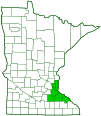wedge-shaped beetle
(Ripiphorus spp.)
Overview • Description • Distribution • Taxonomy
Description |
||
Ripiphorus beetles look more like wasps or flies than beetles. Adults are ⅛″ to 7 ⁄16″ (4 to 11 mm) in length. The head is vertical and is strongly constricted behind the eyes. The neck is inserted in the first thoracic segment (prothorax). The upper surface (vertex) is distinctly elevated above the front (anterior) margin of the upper thoracic plate (pronotum). The pair of chewing structures of the mouth (mandibles) are prominent and bent inward. There are two small, black, oval, prominent, compound eyes and no simple eyes (ocelli). The eyes are situated on the side of the head leaving a broad upper face (frons). The antennae are inserted above the eyes on each side of the vertex. On the female they have ten or eleven segments and may have projections on one side of each segment (monoflabellate), both sides (biflabellate), or be simply deeply sawtoothed (serrate). On both sexes, there are no projections or teeth on the first two segments. The pronotum is broad. It does not have a sharp lateral ridge or a distinct suture. It is as wide at the base as the abdomen. The base has a large lobe in the middle that covers the plate over the wing bases (scutellum). The scutellum is exposed when the insect bends down to feed. The abdomen of the female is deeply curved at the end, so much that the ovipositor is directed forward. The hardened forewings (elytra) are very short, convex, and scale-like. They do not extend beyond the thorax. The hindwings are entirely exposed. The legs are short. The last part of the leg (tarsus), corresponding to the foot, is black and has five segments. On the hind leg it has only four segments. The first and last tarsal segments on the hind leg are the longest, the third segment is the shortest. There is a pair of toothed claws at the end of each tarsus. |
||
Distribution |
||||
|
Sources |
|||
| 11/15/2020 | ||||
Taxonomy |
|||
Order |
Coleoptera (beetles) | ||
Suborder |
Polyphaga (water, rove, scarab, long-horned, leaf, and snout beetles) | ||
Infraorder |
Cucujiformia | ||
Superfamily |
Tenebrionoidea (Fungus, Bark, Darkling and Blister Beetles) | ||
Family |
Ripiphoridae (Wedge-shaped Beetles) | ||
Subfamily |
Ripiphorinae | ||
Subordinate Taxa |
|||
|
|||
Synonyms |
|||
Rhipiphorus (misspelling) |
|||
Common Names |
|||
This genus has no common name. The common name for the family Ripiphoridae is wedge-shaped beetles, and it is applied here for convenience. |
|||
Glossary
Elytra
The hardened or leathery forewings of beetles used to protect the fragile hindwings, which are used for flying. Singular: elytron.
Frons
The upper part of an insect’s face, roughly corresponding to the forehead.
Ocellus
Simple eye; an eye with a single lens. Plural: ocelli.
Pronotum
The exoskeletal plate on the upper side of the first segment of the thorax of an insect.
Prothorax
The first (forward) segment of the thorax on an insect, bearing the first pair of legs but not wings.
Scutellum
The exoskeletal plate covering the rearward (posterior) part of the middle segment of the thorax in some insects. In Coleoptera, Hemiptera, and Homoptera, the dorsal, often triangular plate behind the pronotum and between the bases of the front wings. In Diptera, the exoskeletal plate between the abdomen and the thorax.
Vertex
The upper surface of an insect’s head.
Visitor Photos |
|||||
Share your photo of this insect. |
|||||
| This button not working for you? Simply email us at info@MinnesotaSeasons.com. Attach one or more photos and, if you like, a caption. |
|||||
Alfredo Colon |
|||||
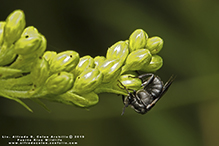 |
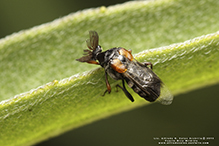 |
||||
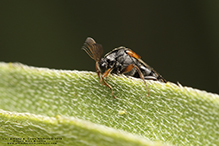 |
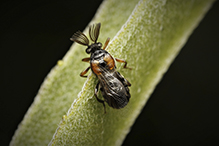 |
||||
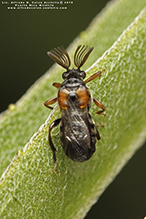 |
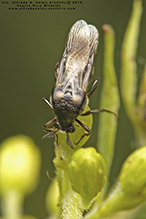 |
||||
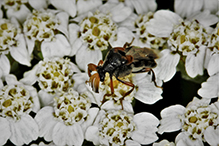 |
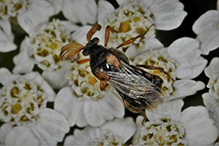 |
||||
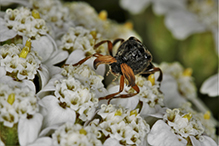 |
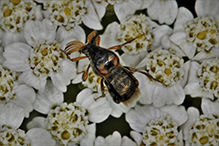 |
||||
MinnesotaSeasons.com Photos |
|||||
|
|||||

Slideshows |
||

Visitor Videos |
|||
Share your video of this insect. |
|||
| This button not working for you? Simply email us at info@MinnesotaSeasons.com. Attach a video, a YouTube link, or a cloud storage link. |
|||
Other Videos |
|||

Visitor Sightings |
|||||
Report a sighting of this insect. |
|||||
| This button not working for you? Simply email us at info@MinnesotaSeasons.com. Be sure to include a location. |
|||||
| Alfredo Colon 8/12/2019 |
Location: Woodbury, Minnesota |
 |
|||
| Alfredo Colon 8/9/2019 |
Location: Woodbury, Minnesota |
 |
|||
| Alfredo Colon 8/5/2019 |
Location: Woodbury, Minnesota |
 |
|||
| Alfredo Colon 6/20/2018 |
Location: Woodbury, Minnesota |
 |
|||
MinnesotaSeasons.com Sightings |
|||||
|
|||||

Created: 12/13/2018
Last Updated:
